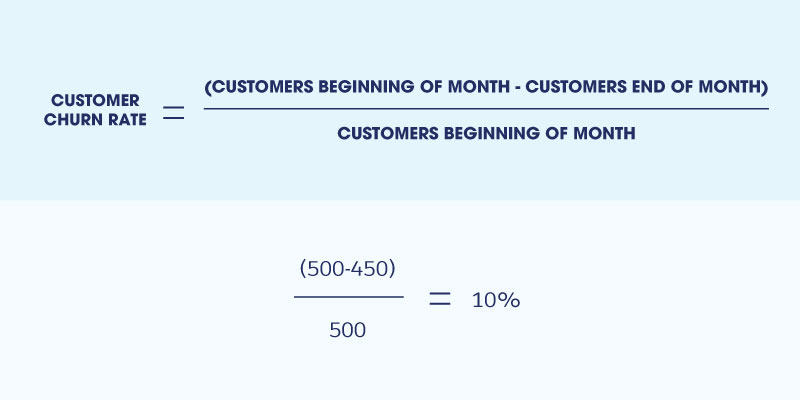You can gain a deeper understanding of what keeps your customers coming back by tracking key customer service metrics with customer relationship management (CRM) data.
Whether B2B (business-to-business) or B2C (business-to-consumer), organizations strive to retain customers and increase the lifetime value of these relationships. Measuring customer service performance can help.
With CRM, your organization can store customer data and provide a platform to help manage and resolve cases (or queries) efficiently. CRM can show a customer’s past purchase history, website visits, interests, communication history, past queries, and more. It also can help you track several important customer service metrics.
Six Customer Service Metrics to Track (& Why)
1. First Response Time
Quickly responding to your customers’ requests is critical. A fast response time demonstrates to customers that you’re ready to help them. If you don’t respond to their requests soon enough, your customers may begin to research and engage a competitor.
Measuring first response time is a helpful way to check that customers are receiving prompt attention.
How to calculate first response time: Calculate the number of minutes/hours/days between the time of customer request and the time of first response.
Tip: Find the current monthly average, then try to improve it next month.
2. Average Handle Time
This metric identifies the average amount of time it takes an agent or customer service representative (CSR) to respond to a single inquiry.
Customer service lives in the details. The shorter the time, the more efficient your team is. However, for this metric, speed is not the only factor to consider. Rushing often does not result in customer satisfaction. The goal is to reduce this number over time by examining ways to improve the process.
How to calculate average handle time: Use a time-tracking system where CSRs track their time per case. Then, review the average time over a period (month, quarter, etc.).
Tip: Set up reminders for lingering cases/queries.
3. Engagements per CSR
This metric is exactly what it sounds like. It reflects the number of engagements CSRs have with customers daily. While it can be helpful that customers are interacting with your company and customer service is accessible, getting too many cases or queries may indicate an issue.
How to calculate engagements per CSR: Count and compare engagements week over week or month over month.
Tip: Review if some agents consistently handle more cases and check in with them to learn more about their workflows.
4. Overall Resolution Rate
Replying to a customer simply implies you’ve responded to their query.
Resolving an issue means any questions or concerns have been handled and no further action needs to be taken on the case.
The overall resolution rate reflects the percentage of customers who have their cases resolved and closed. Keep this number high to help keep customers happy.
How to calculate the overall resolution rate: Divide the number of completed or closed cases by the total number of cases to find the percentage of resolved cases.
Tip: Strive for first contact resolution, where customers’ issues are handled after just one query.
To help make your customer support more efficient, list common questions in a FAQ document. Then proactively mitigate follow-up questions by providing related articles or guides.
5. Customer Churn
Customer churn is the rate at which customers stop doing business with your organization over a period. The higher the churn rate, the more customers stop using your services or buying from you. The lower the churn rate, the more customers you retain.
Problems can arise when the churn rate increases. Studies have shown that acquiring new customers can be five times more expensive than retaining existing customers. That’s why this customer service metric is important.
How to calculate customer churn: Following Salesforce’s method, here’s how to calculate your customer churn rate:

Tip: Consider surveying customers who have churned to gain insight into their reason(s) for leaving.
6. Customer Satisfaction Score
A customer satisfaction score (CSAT) is a metric that shows how satisfied customers are with your organization, products, and services. CSAT uses multiple survey questions to focus on specific parts of the customer experience.
Here are a few survey question examples:
- How would you rate your experience with our product?
- How satisfied are you with the agent you spoke with today?
- How satisfied are you with your 14-day trial?
Customers are then given a five-point scale to record their answers—with 1 meaning “extremely dissatisfied” and 5 meaning “extremely satisfied.”

Ideally, your customer satisfaction score should improve over time. If it doesn’t, consider reviewing your customer service coaching program.
How to calculate CSAT: Divide the number of satisfied customers (those who answered with 4s and 5s) by the number of survey responses to get the percentage of satisfied customers.
Tip: Measure customer satisfaction after each engagement with a customer service agent. These ratings can be measured over time to analyze performance.
Why Customer Service Metrics Matter
- More than 50% of customers say they are likely to decrease or stop spending with a brand after a bad customer experience. (Qualtrics)
- 89% of consumers are more likely to make another purchase after a positive customer service experience. (Salesforce)
- 63% of consumers expect businesses to know their unique needs and expectations, while 76% of B2B buyers expect the same thing. (Salesforce)
CRM can help you manage relationships and improve customer experiences throughout the customer journey.
Ready to track customer service metrics with CRM? The Business Technology Solutions team at Forvis Mazars has certified experience in Salesforce and Microsoft Dynamics 365 CRM systems. Send us a message using the Contact Us form below to get started.
